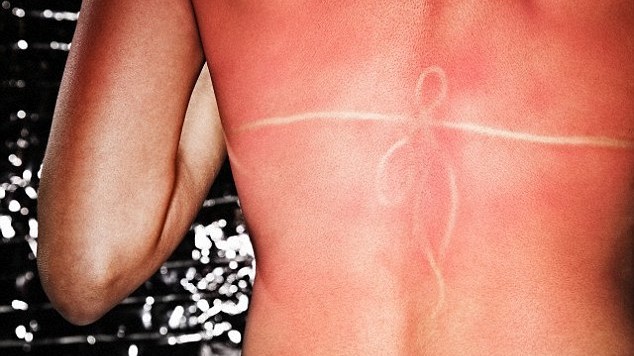
- Dermatologists at Yale University want to develop a ‘night-time’ sunscreen
- They found energy from UV light can damage DNA hours after sunbathing
- They say it may be possible to block this energy from transferring to DNA
- Surprisingly, the pigment that protects our skin in the sun is responsible
- They found melanin absorbs the UV energy but later transfers it to DNA
- Scientists say chemicals that block this energy transfer can be used to make a new type of sunscreen that sunbathers would put on in the evening
Applying ‘night-time sunscreen’ after a day in the sun may help reduce the risk of developing skin cancer, according to scientists.
Researchers have found that much of the damage caused by ultraviolet light from a day on the beach occurs hours after the sun has set.
They discovered that energy absorbed from the sun by skin cells called melanocytes is transferred to the DNA in the dark, causing it to deform.
Professor Douglas Brash, a dermatologist at Yale University, said: ‘So our understanding has been that you put on sunscreen before you go out into the sun and that protects your skin.
Here you have a different situation where what you want to do is add something after you leave the beach or tanning bed that protects you for several hours after.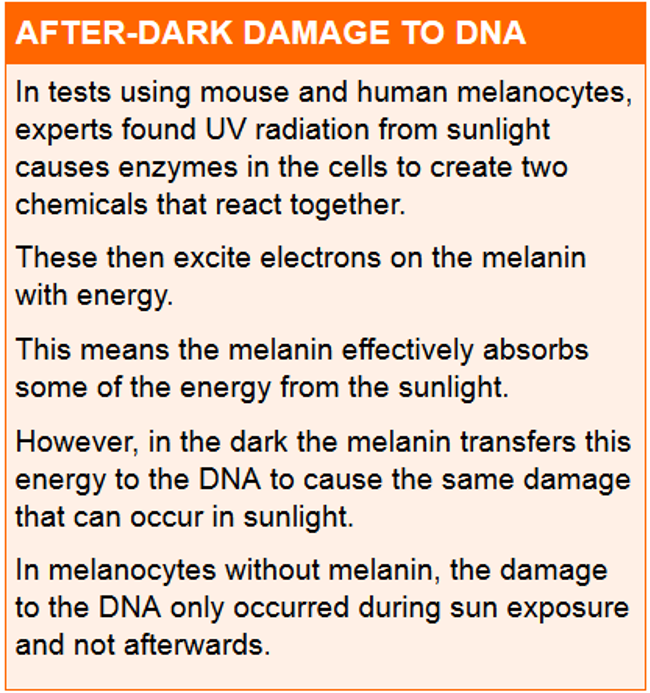
‘You could imagine designing chemicals that dissipate that energy before it has a chance to get to the DNA.
‘There are chemicals like that that already exist and we used some of those as tools in the research, but you could imagine getting better ones that are practical to use in the skin.’
Ultraviolet light is thought to damage DNA by causing a ring-shaped structure to from in the DNA, known as a cyclobutane dimer.
This prevents the genetic code from being read properly and leads to faults in the functioning of the cells, leading to them becoming cancerous.
Melantocytes produce a pigment called melanin that was thought to help protect the skin from ultraviolet light.
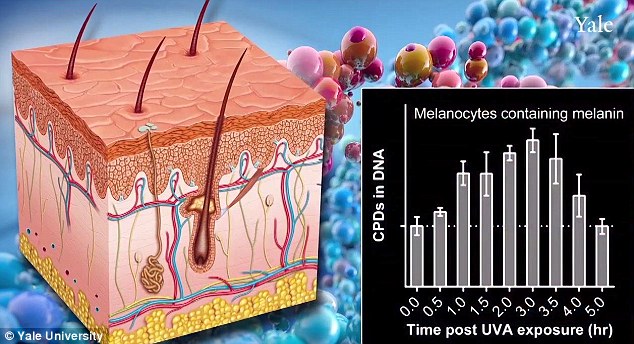
The Yale study found that DNA damage (labelled as CPDs in the graph above) in melanocyte skin cells continued for up to four hours after exposure to ultraviolet light had stopped, increasing the risk of cancer.

In tests using mouse and human melanocytes, he found UV radiation from sunlight causes enzymes in the cells to create two chemicals that react together.
These then excite electrons on the melanin with energy.
This means the melanin effectively absorbs some of the energy from the sunlight.
However, in the dark the melanin transfers this energy to the DNA to cause the same damage that can occur in sunlight.
In melanocytes without melanin, the damage to the DNA only occurred during sun exposure and not afterwards.
Professor Brash said: ‘When sun hits your skin normally what happens is that it makes damage to your DNA in a millionth of a millionth of a second.
‘In melanocytes, which are the cells that make the pigment that is protecting your skin, that is not all that is going on.
‘You are getting the same kinds of DNA damage in your skin for hours after the exposure has ended.
‘What is suprising is that melanin is actually doing things that can cause cancer as well.
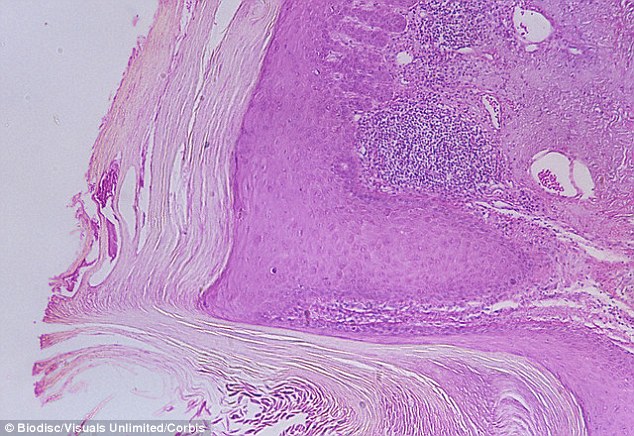
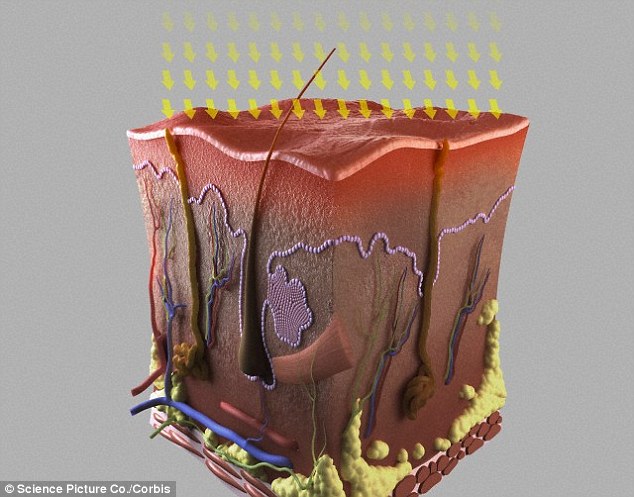
The diagram above shows the effects of ultraviolet radiation (yellow arrows) on the upper layers of the skin. In addition to a ‘night-time sunscreen’, Professor John-Stephen Taylor at the Washington University in St Louis, who studies DNA damage caused by the sun, said that improved daytime suncreens could also help
‘Because this is slow and takes several hours it gives us the opportunity to jump in and intervene.’
Professor John-Stephen Taylor, a chemist at the Washington University in St Louis who studies DNA damage caused by the sun, said that improved daytime suncreens could also help.
He said: ‘Researchers have long sought methods to prevent skin cancer induction, and the results of this study indicate that sunscreens should aim to minimise exposure to both UVB and UVA.
As suggested by the authors, UV DNA damage arising in the dark might also be reduced by agents that scavenge or interfere with superoxide and nitric oxide production or that quench the excited triplet-state intermediates.’
